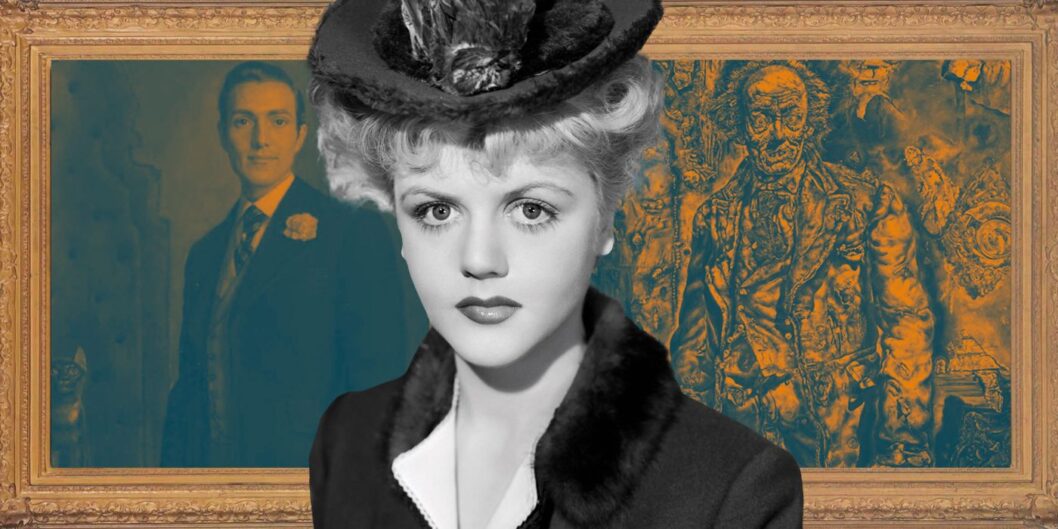Angela Lansbury’s Legacy: A Closer Look at Her Role in ‘The Picture of Dorian Gray’
Angela Lansbury, known for her iconic roles in films and television, is fondly remembered by many as the voice of Mrs. Potts in Disney’s Beauty and the Beast and as the astute mystery writer Jessica Fletcher in Murder, She Wrote. However, Lansbury’s expansive career included significant performances that showcased her talent across various genres, including a notable role in the 1945 horror-fantasy film The Picture of Dorian Gray. This film not only marked a pivotal moment in her career, but it also earned her a second Academy Award nomination for Best Supporting Actress.
Synopsis of ‘The Picture of Dorian Gray’
The Picture of Dorian Gray is an adaptation of Oscar Wilde’s novel, which explores themes of beauty, morality, and the consequences of a hedonistic lifestyle. The narrative begins with Lord Henry Wotton (George Sanders) visiting an artist named Basil Hallward (Lowell Gilmore) while he paints the protagonist, Dorian Gray (Hurd Hatfield). Captivated by Dorian’s beauty, Lord Henry encourages him to indulge in life’s pleasures while he is still young. Dorian, in turn, wishes that his portrait would age instead of him, a wish that is granted, leading to tragic consequences.
Dorian falls in love with a young actress, Sibyl Vane, portrayed by Lansbury. While initially enamored with her talent and beauty, Dorian cruelly breaks off their engagement, resulting in Sibyl’s suicide—a pivotal turning point that highlights the destructive nature of Dorian’s choices. As the plot unfolds, Dorian remains youthful while his portrait, hidden away in his attic, reveals the corrupting effects of his actions, visually representing his moral decline.
Lansbury’s Critical Role in the Film
Though Lansbury’s time on screen is limited, her performance as Sibyl Vane is vital to the film’s emotional and thematic depth. At just nineteen years old, Lansbury captures Sibyl’s youthful vulnerability juxtaposed against her underlying strength and intelligence derived from her working-class background. "Her love for Gray scares him," the narrative suggests, as she embodies an inner beauty that Dorian himself lacks, highlighting the personal and moral dilemmas faced by the protagonist. This role exemplifies Lansbury’s talent and versatility as an actress, establishing her as a formidable presence in the film industry.
Visual Storytelling in the Film
Director Albert Lewin masterfully employs visual storytelling to convey the film’s central metaphor: that external beauty can mask internal decay. The film’s Oscar-winning black-and-white cinematography, by Harry Stradling Sr., effectively contrasts Dorian Gray’s youthful beauty with the grotesque transformation of his portrait, which reflects the deterioration of his moral character over time. For instance, the transition of the painting from vibrant hues to darkness parallels Dorian’s loss of humanity, culminating in a haunting visual representation of guilt and depravity.
The Impact of Lansbury’s Work
Angela Lansbury’s role in The Picture of Dorian Gray is just one example of her impressive range as an actress. Her career kicked off with a contract at MGM and continued to flourish with notable performances, including her Oscar-nominated roles in Gaslight and The Manchurian Candidate, reflective of her ability to tackle complex characters in both film and theater. She has also received numerous accolades throughout her career, including multiple Tony Awards for her stage performances.
The Picture of Dorian Gray remains a significant work in Lansbury’s legacy and cinematic history. It poses critical questions about the nature of beauty and morality, themes that resonate even today. The film is available for streaming on Max, allowing new audiences to appreciate its artistry and Lansbury’s unforgettable contribution.
In summary, Angela Lansbury’s portrayal in The Picture of Dorian Gray captures the essence of her talent and the film’s thematic richness. The intersection of vulnerability, beauty, and moral conflict not only underlines Lansbury’s ability to portray complex characters but also enriches the broader tapestry of film history. As audiences revisit this classic, they are reminded of the lasting impact that Lansbury and her contemporaries have had on the industry.









